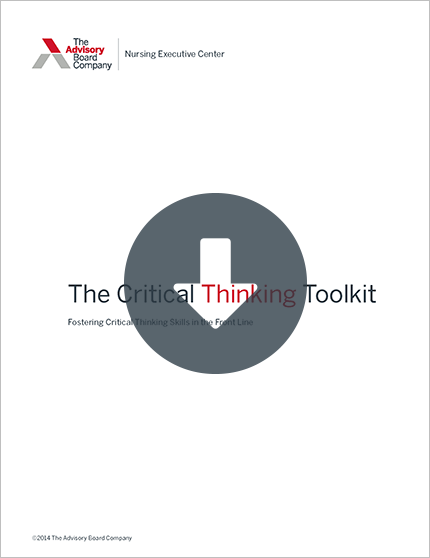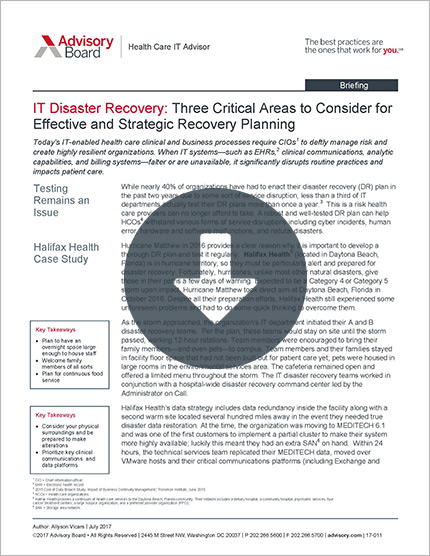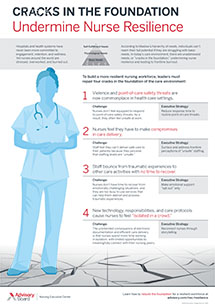Auto logout in seconds.
Continue LogoutWhile hospital shootings are rare, they've become more common in the past 20 years, and many hospitals are now holding active shooter drills to train staff when to run to and away from the danger, Jamie Ducharme reports for Time.
From shootings to hurricanes: How can your hospital prepare for disasters?
A rare occurrence
More than 150 hospital shootings occurred between 2000 to 2011 across 40 states—about 30% were in hospital EDs—according to a 2012 study in the Annals of Emergency Medicine. FBI data show four of the 50 active shooter incidents that occurred in 2016 and 2017, happened in a health care setting. And earlier this month, a gunman entered Mercy Hospital in Chicago, killing a physician, a pharmacy resident, and a police officer.
These situations are rare, but preparedness is important, according to Jeff Solheim, president of the Emergency Nurses Association. "Making sure that every hospital has a concrete plan in place to deal with these incidents, and that drills are carried out regularly for these incidents and that those drills are carried out with law enforcement and other community agencies, that would be the dream world," he said.
And increasingly, that is becoming the reality, Solheim said. Many hospitals are "adding active shooters into their disaster drills," something that would have never been thought of five or six years ago, he said.
How hospitals are preparing
When devising hospital security plans and preparations, it's important to keep in mind the unique challenges that hospitals face, Ducharme writes.
"Very few hospitals have every single door locked, controlled, and someone there, with metal detectors," Brennan said. "It's really challenging to be 100% confident that you have everything covered."
Even more challenging is the fact that the people within a hospital can have significantly different levels of training and mobility, which means standardized advice is difficult to apply, Brennan said.
Typically, people in an active shooter situation are advised to run away from the shooter first, hide if they can't run, and attempt to fight off the shooter as a last resort, Ducharme writes. But patients in a hospital may be entirely immobile or in the middle of treatment, making it impossible for them to run, hide, or fight.
In recent years, the health care industry has come up with new ways to protect patients and staff in the event of an active shooter that fall into three broad strategies.
1. Bolstering hospital security—and staff awareness
In Patient Safety & Quality Healthcare, contributing writer John Palmer outlined several strategies health care organizations can adopt to prevent and prepare for active shooters, including educating staff about the importance of familiarizing themselves with their patients and other staff members and recognizing "behaviors of concern" that may indicate an individual could be violent.
Palmer wrote that it's equally important for staff to feel comfortable speaking up when they notice something amiss and for hospitals to put in place barriers and locks to keep nurse's stations and other intake areas secure.
Ensuring unauthorized individuals do not enter secure areas by following staff members was a key component of Brigham and Women's Hospital's 2017 security campaign. Hospital administrators updated the facility's security features and encouraged hospital employees to question or report suspicious individuals after a man in 2015 entered the hospital and fatally shot a doctor.
2. Practicing active shooter drills
In 2016, Children's Health Children's Medical Center in Dallas began preparing its ED staff for active shooter situations. The drills required the hospital's Emergency Management team, simulation staff, security and ED leadership to work together to develop an educational lesson on active shooters, a pre- and post-class survey, and the simulation drill.
A paper published in the Journal of Emergency Nursing in August found that 92% of the medical center's ED staff felt more prepared for an active shooter situation as a result of the new simulation drills. The paper concluded that these classes were a "definite recommendation" for hospitals.
A team of providers in another paper published in August, in the New England Journal of Medicine, offered hospital administrators a different and specific approach to active shooters: the "secure, preserve, fight" strategy. This strategy advises providers to secure areas where life-saving care is in progress first, then to preserve their patients' lives by moving them to a secure area. Providers should try to fight the gunman only as a last resort.
Paul Brennan, immediate past president of the International Association of EMS Chiefs, said education, training, emergency alert systems, and collaboration with local law enforcement are all essential to preparing for an active shooter situation.
"If you're not teaching and training your staff, and you're not drilling, you're not doing exercises, your staff is either going to forget, or they're not going to be educated enough to respond well when something happens," he said.
3. Taking precautions to protect patients and staff
Palmer in his article also noted that hospital administrators should work to create safe rooms where staff and patients can hide, encourage staff to leave jewelry at home or in a locker as necklaces can be a choking hazard, and to regularly update emergency contact lists and review proper procedures for how staff should report a violent incident.
Rare events make it hard to strategize
While experts generally agree preparation is key, some experts say it's hard to tell if any one strategy works as active shooters occur so rarely in hospitals.
Gabor Kelen, director of Johns Hopkins University School of Medicine's emergency medicine department, said, "There isn't enough data and experience to know which of the strategies has the greatest yield, and which of these strategies fits to the psychological moment of even trained people."
That said, Brennan said hospitals should have some plan in to place because while rare, hospital shootings are no longer a "never event." He added, "Shootings are low frequency, but the results can be deadly" (Ducharme, Time, 11/28; Thew, HealthLeaders Media, 11/29).
From shootings to hurricanes: How can your hospital prepare for disasters?
Hospitals must be prepared for myriad disasters that can stress health care systems to the breaking point and disrupt delivery of vital health care services.
Advisory Board has compiled step-by-step procedures for various threats your facility may encounter—though we hope you'll never need to use them.
Don't miss out on the latest Advisory Board insights
Create your free account to access 1 resource, including the latest research and webinars.
Want access without creating an account?
You have 1 free members-only resource remaining this month.
1 free members-only resources remaining
1 free members-only resources remaining
You've reached your limit of free insights
Become a member to access all of Advisory Board's resources, events, and experts
Never miss out on the latest innovative health care content tailored to you.
Benefits include:
You've reached your limit of free insights
Become a member to access all of Advisory Board's resources, events, and experts
Never miss out on the latest innovative health care content tailored to you.
Benefits include:
This content is available through your Curated Research partnership with Advisory Board. Click on ‘view this resource’ to read the full piece
Email ask@advisory.com to learn more
Click on ‘Become a Member’ to learn about the benefits of a Full-Access partnership with Advisory Board
Never miss out on the latest innovative health care content tailored to you.
Benefits Include:
This is for members only. Learn more.
Click on ‘Become a Member’ to learn about the benefits of a Full-Access partnership with Advisory Board
Never miss out on the latest innovative health care content tailored to you.



